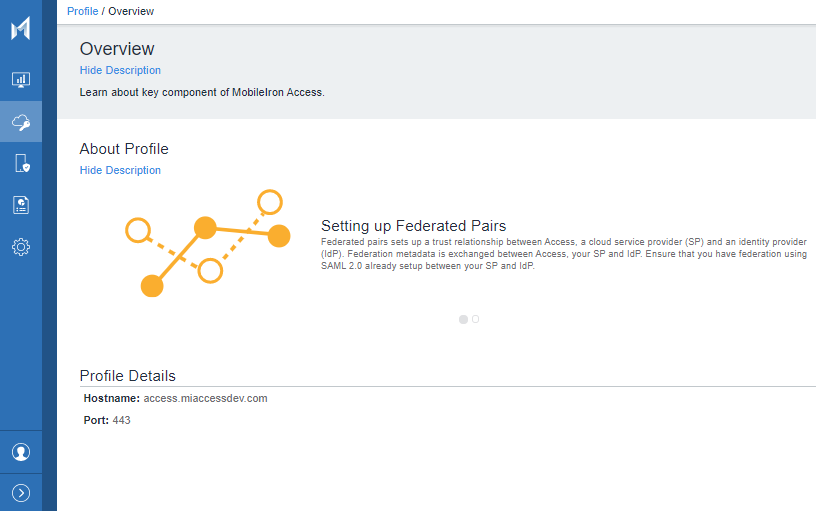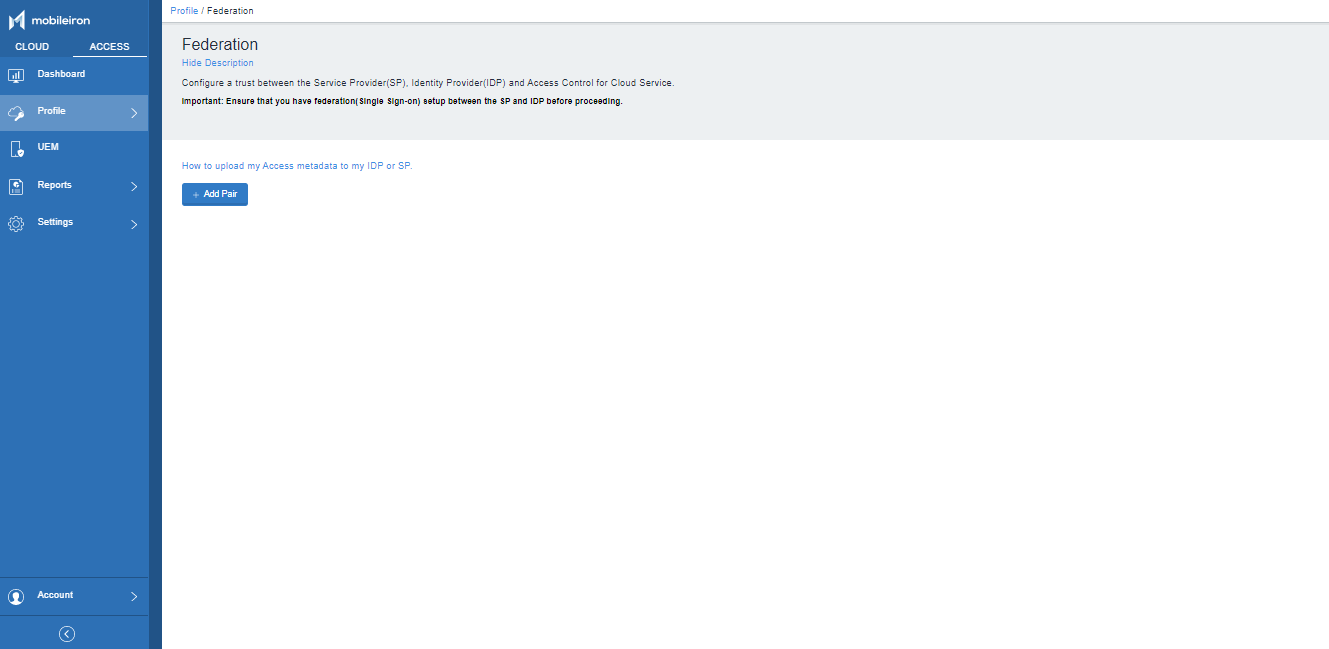Access overview
Access allows access to enterprise cloud resources based on user and device posture, and whether apps are managed or not. Non-AppConnect managed apps and AppConnect apps are supported. Authentication traffic for managed apps uses Tunnel and for AppConnect apps uses AppTunnel. In addition, conditional rules can be configured to allow access for unmanaged applications, as well as, manage access from mobile devices, laptops, and desktops.
Deployment modes
Access consists of two modes of deployment.
- Access
In an Access deployment, Access integrates directly with a UEM to get device posture and compliance information from the UEM. - Access + Standalone Sentry
In an Access + Standalone Sentry, Access integrates with Standalone Sentry to get device posture and compliance. In this deployment, Access has two components:- The Access administrative portal, which is a SaaS service. Federated pair setup and configurations are done in the Access administrative portal.
- The Access gateway, which runs on Standalone Sentry, enforces conditional access policies and provides native mobile app single sign-on (SSO).
Access in either deployment provides the following features:
- Integration with business cloud service providers (SP).
- Integration with identity providers (IdP). Conditional rules to allow, block, and warn Access.
- Secure access to enterprise cloud based services.
- Federated authentication with SAML or WS-Fed.
- Visibility into users, devices, and apps accessing cloud services.
- Prevention of unauthorized devices and apps from accessing cloud based services.
Naming convention
Unless otherwise noted, Access refers to both Access and Access + Standalone Sentry deployments.
User interface
Access is available in the Access administrative portal or in the Cloud portal. To work with either of these instances, use on of the following options:
- If your Access deployment does not integrate with Cloud, then Access features are available in the Access administrative portal. For more information, see Working with Access administrative portal.

- If your Access deployment integrates with Cloud, then the Access features are available in Cloud in the left navigation pane. The Cloud and Access tabs are available in one console in Cloud. For more information about this user experience, see Working with Access in Cloud administrative portal
Working with Access in Cloud administrative portal
Support and compatibility
For information on support and compatibility, see the Access Release Notes.